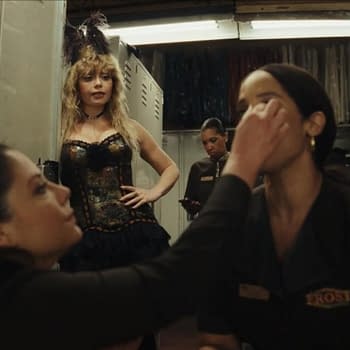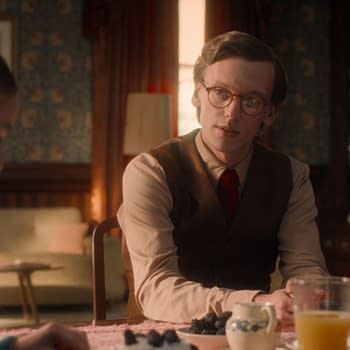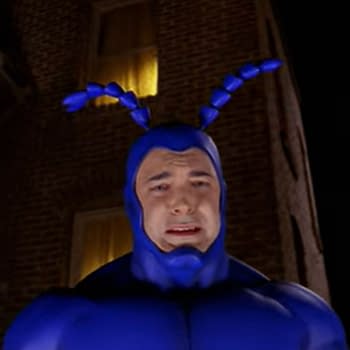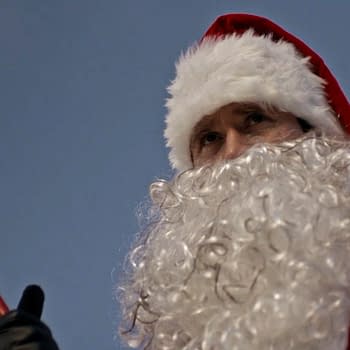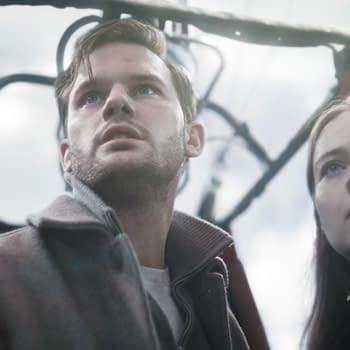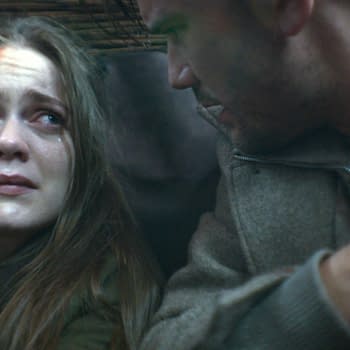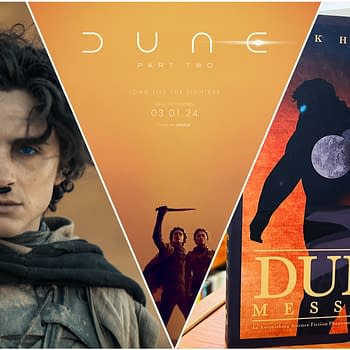Posted in: Exclusive, Interview, Movies | Tagged: Aristotle Athari, exclusive, Hannah Kittell, interview, LeVar Burton, Level 33 Entertainment, Michael Lukk Litwak, Moli and Max in the Future, Star Trek: The Next Generation, Zosia Mamet
Molli and Max in the Future: Costume Designer on Making "Weird Sci-Fi"
Costume designer Hannah Kittell (Pixar in Real Life) spoke to us about Michael Lukk Litwak’s sci-fi rom-com Molli and Max in the Future.
Article Summary
- Hannah Kittell shares her journey from Star Trek fan to designing for Molli and Max.
- The indie film's challenges led to unique costume designs with personal touches.
- Kittell's background in cosplay and Pixar in Real Life helped shape her process.
- She dreams of working on new worlds and cult classic potential projects.
Hannah Kittell knew she wanted to be a costume designer at a young age, but to work on her dream, she had to claw her way through the industry and pay her dues. Since her debut in The House That Jack Built in 2013, she's worked on over 20 projects, including The Wandering Earth II (2023), Disney+ series Pixar in Real Life, and Kate Plays Christine (2016). Over a decade later, fate circled back after growing up on Star Trek and back into science fiction with Level 33 Entertainment's sci-fi rom-com in Michael Lukk Litwak's Molli and Max in the Future. The film is set a billion years in the future, where magic, sentient robots, and demigods exist. Meanwhile, Molli (Zosia Mamet) and Max (Aristotle Athari) bump into each other over the course of twelve years: four planets, three dimensions, and one space cult. One of them can fly, while the other is half-human/half-fish.
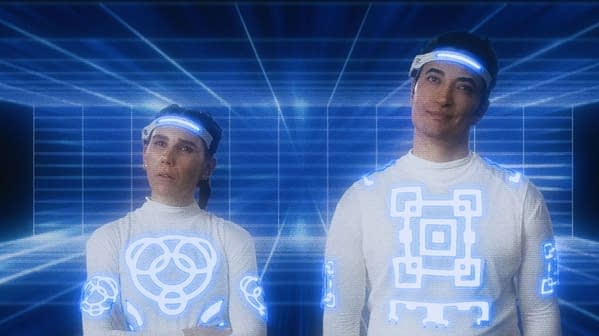
Aristotle Athari in "Molli and Max in the Future" (2023). Image courtesy of Level 33 Entertainment
Molli and Max in the Future: Hannah Kittell: A Passionate Nerd Living Her Costume Design Dreams
Bleeding Cool: How did you get involved with Molli and Max in the Future?'
Kittell: I hadn't met Michael, the director, before. I hadn't connected to anybody in the film. He reached out to a friend and colleague of mine, Vera Chow, to design it. He got her name from someone else. [At the time] she was busy designing 'The Walking Dead' at that point that she couldn't do it, but she said, "This is a nerdy, weird sci-fi movie, and I have just the nerdy, weird person [laughs] for you, and she gave them my name. I talked to Michael briefly about it, and we realized that we wanted to watch and make the same movies as each other. This was that movie, so we hit it off immediately and started from there.
With something like this, the style, clothing, and world-building, what were their inspirations that helped guide you on this journey? Was it something that Michael gave you some bullet points to go from?
Michael had been working on this for a long time. Initially, he wasn't sure how much funding he could get, so he had this alternate timeline where he would have to do this whole thing himself, including all the production and costume designs. He had a fantastic workbook already and was preparing to do this independently. He had this whole vision of the film going, and once I came on board, I looked at that, and I looked at a lot of the film references that he felt inspired by. Thankfully, we hit it off, and we had a similar vision. He gave me free rein to go nuts and do a lot of my stuff. I pitched an idea to him for a lot of big-ticket costumes or visual joke costumes. He thought it was funny, and we went from there.
When it comes to the input and time you put into the costuming, does it dramatically differ depending on the type of project you're working on? For example, when it's an indie film like this versus a bigger-scale project, what are the advantages of having more at your disposal than being more resourceful?
There are benefits and challenges to both, for sure. With 'Molli and Max,' I was a costume department of one. In addition to being THE costume department, I had my daughter on set with me, who was ten months old at the time, every day. That's wild because, on the one hand, Michael and I are close. All the actors were on board, and we were all close. We could play off each other and work with each other. We knew the level of indie that we were making at the same time. Every costume in that entire movie had to be shopped or built in many cases like I built or created.
There were points where, maybe, if we made the $60 million version of this movie, I would have done things a little differently. On the other hand, I feel like it all worked together, and resourcefulness is always a fun challenge. In this case, it made for some funny visual gags. In a bigger movie, you have more resources and more hands so that you can focus on as a designer. You can focus on designing more rather than worrying about all the nuts and bolts of getting clothing for the actors. At the same time, you're also at the mercy of a bunch of executive producers who have a bunch of ideas about things and marketing, including what will fly and what won't. In smaller movies, you must wear a lot more hats. You also must do a lot more non-design-related work. At the end of the day, you can take a lot more risks, which is fun.
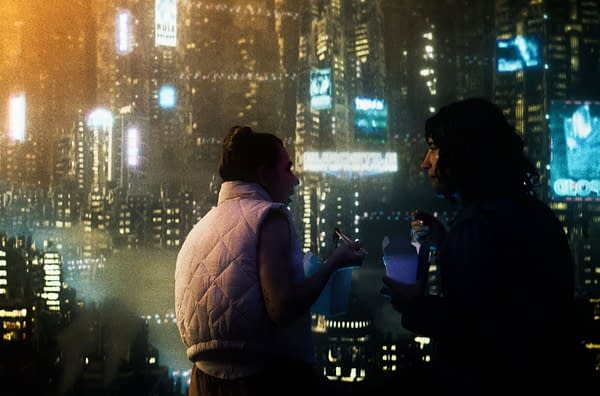
Was there a particular costume that was more difficult in 'Molli and Max' than others?
A lot, I would say. There were a few difficult costumes. Max's spacesuit, which you only see for a little bit. He crashes, and then that's all you see. Getting to the massive dome was hard. There's one where this post-fame look; he has a fake NASCAR jacket with all the fake companies on it. That was a challenge because I had to make each one of those patches and apply them to the jacket. Another one was the cyber suit, which was used to make all those designs and then apply them to all the costumes. That was a lot harder and took a lot of R&D because we had to figure out visual effects, like what materials would make the most sense and what materials I could physically do with the time I had working on the costume all by myself. That was also a big challenge.
Was there any previous work that helped guide your experience in 'Molli and Max?'
I would say the project that helped me most was a Disney+ series I designed called 'Pixar in Real Life.' It was a collaboration with Improv Everywhere. We had to make real-life physical versions of a bunch of Pixar characters. That required a lot of interesting crafting and a lot of interesting problem-solving that was helpful. Honestly, the thing that helped me the most was my background in cosplay. As a nonprofessional, I used a lot of cosplay tricks, so I'm thankful for that nerdy background that helped me a lot with this.
How long did it take for the planning to get to execution? Did it take a while to make it a reality from Michael's original vision? What sacrifices had to be made?
He was working on it for a lot longer. He and Zach [Stoltzfus], the DP, worked on it a lot longer than I did. I had a couple of months of prep, so that was good. I will say with indies, there's always casting, and it comes in late. You don't know what's going on. I would say time was still an issue, even though we had so much planning. I'd come to set and dress everyone, and then I'd have to go back to my studio and start building the costumes for the next few days or a week. It [eventually] got more streamlined. It made me think about what the most important beats of this are, what's the most important visual joke? If it's not a visual joke, if it's just like a day where what are we trying to say here? I didn't get too granular in a way that I may have if I hadn't been crew or a lot of time.
Do you have any wish lists for some genres, IPs, or anything that you can hope to do in the immediate future?
Oh, man. Yeah [laughs], I would say any IPs I am a big fan of would feel like a dream. I'm, again, a massive nerd in real life. I'm like obsessive, and there are certain IPs that I would go insane about.
Like Star Wars, Lord of the Rings?
No, live-action 'Metal Gear Solid' [laughs]. That's my emotional comfort video game. Aside from that, any new…I love it when people create new stuff, too, and I love the opportunity to create new worlds. I feel like, for me, any horror, sci-fi, campy film, anything that will be like a cult classic. I'm just really excited about it.
Were there any figures that inspired your path into costume design? Was it something you discovered cosplaying and felt like a natural progression?
The cosplay thing started in high school. I didn't know much about it, but I knew I wanted to be a costume designer when I was three years old, and I remember the first moment I watched…I don't know why my parents let me watch 'Star Trek: The Next Generation.' I love Geordi, and I remember I was watching TV again when I was raised in front of the TV, as I feel like a lot of kids of my generation work. One day 'Reading Rainbow' came on, and I got so confused, that I asked my mom, "How come Geordi can see?"
She said, "No, honey. That's LeVar Burton, that's an actor." I was like, "Yeah, but he's also Geordi." She said, "Yeah, but in Star Trek, he puts on a costume, and he puts on a little eyepiece, and then he becomes Geordi, and Geordi can't see." I was like, "So he puts on the costume, and then he becomes that person," and she said, "Yeah." I was like. "Cool." That's when it clicked for me, and I started watching many movies and realizing that, like these costumes, these iconic costumes that I loved on these characters. That's someone's job; from then on, that was it. The cosplay was something I already had to scale because I knew I wanted to be a costume designer. I'd done a lot of work with local reenactment groups, and being a big nerd, I already had those skills. It organically went together as a side hobby.
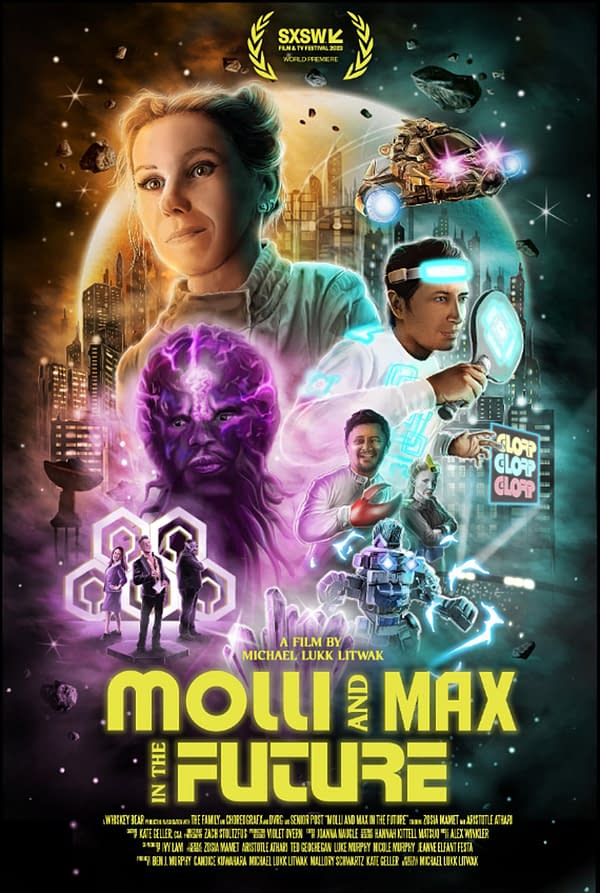
Molli and Max in the Future, which also stars Arturo Castro, Michael Chernus, Aparna Nancherla, and Okieriete Onaodowan, is available in theaters and digital.






